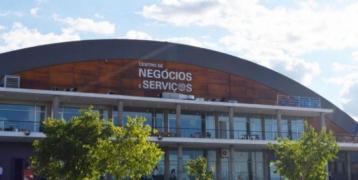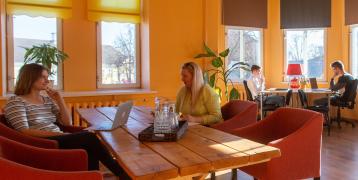Designing an integrated digital strategy in Boiarka City
The Policy Learning Platform conducted an online matchmaking for the Boiarka City Council, on 29 May 2024. The Boiarka City Coucil requested some on advice on the challenge of developing an integrated digital strategy to promote digital literacy among the local population.
Objective of the matchmaking
The Boiarka Urban Territorial Community, comprising the administrative centre and 10 nearby villages, is a medium-sized town with around 50,000 inhabitants situated near Kyiv in Ukraine. Recognising the low level of digital skills and readiness among the local population, the Boiarka City Council aims to design an integrated digital strategy. This strategy seeks to promote digital literacy among students, establish a physical space for the adoption of new digital technologies, and provide targeted support to war veterans by enhancing their digital and entrepreneurial skills.
The vision of the Boiarka City Council is to establish a collaborative physical space that actively engages the local community in digital activities through participatory processes. This collaborative space would offer various amenities, including co-working spaces, Fab Labs, high-speed internet access, meeting rooms, and training and support services aimed at fostering entrepreneurship. Additionally, the space would host events and workshops designed to engage both users and the wider local community.
Participants
Beneficiary: Boiarka City Council, Ukraine
- Olena Kovtun, Mayor advisor, Boiarka City Council, Ukraine.
- Roman Monakov, Head of the digital sector, Boyarka City Council, Ukraine.
Matchmaking Peers:
- Mariana Nagy, Tehimpuls Association, Regional Centre for Innovation and Technology Transfer, Romania.
- Jasna Presečki, Development Centre of the Heart of Slovenia, Slovenia.
- Helena Matuša, CEO Entrepreneurship Centre of Krapina Zagorje County, Croatia.
Moderators:
- Arnault Morisson, Policy Learning Platform
- Laura Varisco, Policy Learning Platform
Key insights
The peers discussed the first steps to initiate a digital strategy in Boiarka, Ukraine, by establishing a collaborative space that serves as a one-stop shop for acquiring digital skills and knowledge within the community.
A collaborative space in small- and medium-sized towns (SMSTs) is designed to bring together multiple amenities, acting as an anchor for creative and knowledge actors, including workers, students, and the community. It functions as a one-stop shop to engage the local community in digital activities through participatory processes. Amenities in such collaborative spaces may include co-working areas, Fab Labs, high-speed internet, meeting rooms, training and support services to promote entrepreneurship, and events and workshops to engage users and the local community.
The first steps to initiate a digital strategy are:
- Assessment and preparation: assess the current digital landscape, engage stakeholders, and identify change agents.
- Define strategic priorities: set priorities based on local needs, create digital spaces, and ensure fast internet.
- Funding (public and private): secure local grants, participate in cooperation projects, and connect with venture capital networks.
- Test, pilots, and monitor: develop and monitor pilot projects targeting specific groups.
- Communicate: raise awareness, communicate clearly, offer training, and use brand ambassadors.
The creation of a collaborative space for promoting digital innovation must involve local quadruple-helix stakeholders in co-creation processes to unite local actors around a common vision for the town. Public-private partnerships (PPP) can be established to create and manage these collaborative spaces, potentially involving leading local private companies or branch universities.
Such collaborative spaces can help address place-based challenges specific to SMSTs, such as promoting an entrepreneurial culture and mindset, enhancing digital literacy, and fostering community engagement. For example, the Lormes the living village Hub in Nièvre, France, demonstrates how to foster digital inclusion through micro-collaborative rural spaces. However, it is crucial for these spaces, especially in rural areas, to have access to fibre broadband. The deployment of fibre broadband can catalyse the creation of collaborative spaces in SMSTs.
Interreg Europe good practices
Additional sources of information
- Interreg Europe policy brief on spaces for innovation
- Interreg Europe policy brief on digital transformation of public services
- Matchmaking on creating spaces for innovation
- Peer review report on the topic of ‘implementing a digital transformation strategy’ with Krapina-Zagorje County, Croatia.
- Interreg Europe story on how to anchor the innovation process in cities?
- Interreg Europe story on how to foster collaborative spaces in rural areas?




